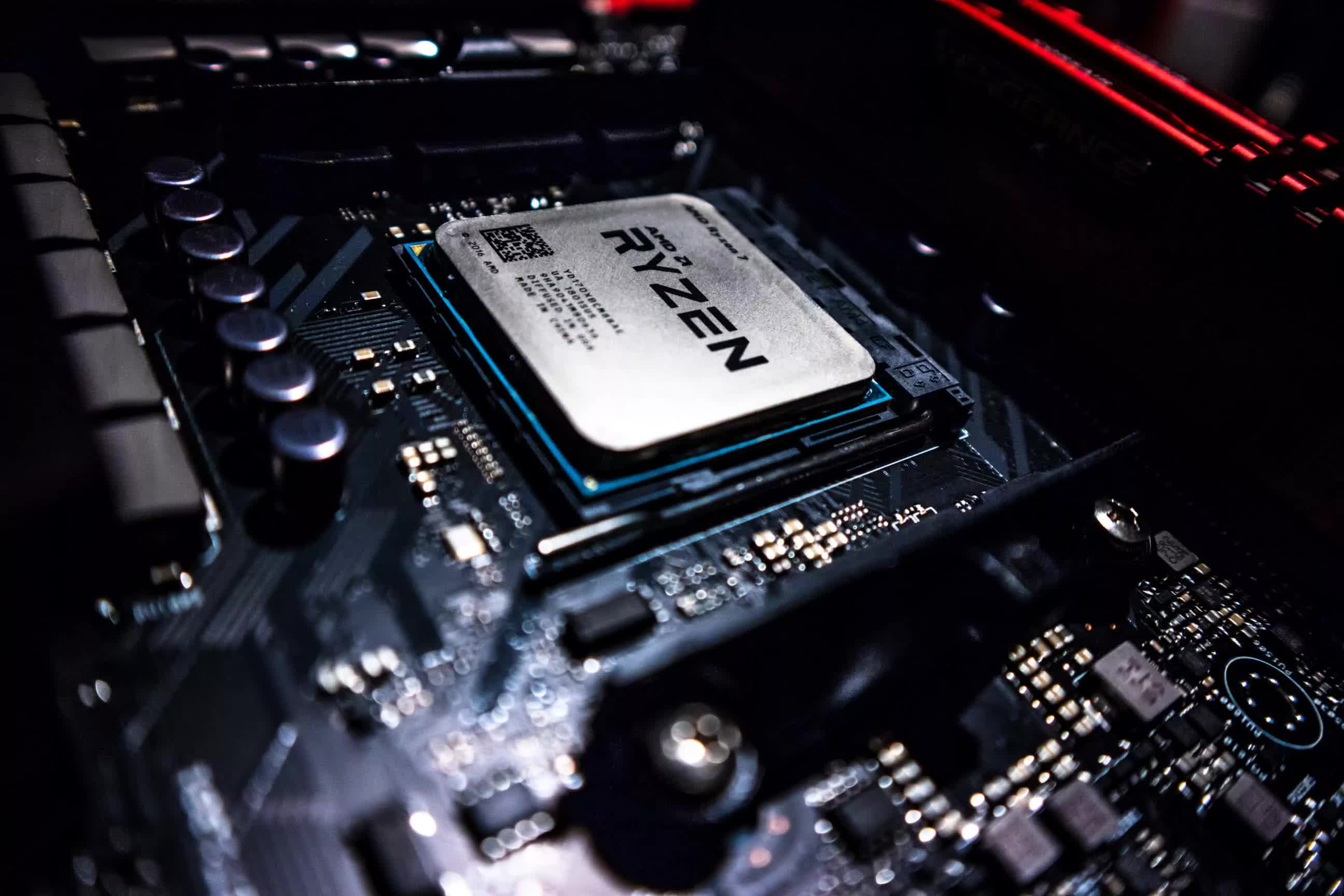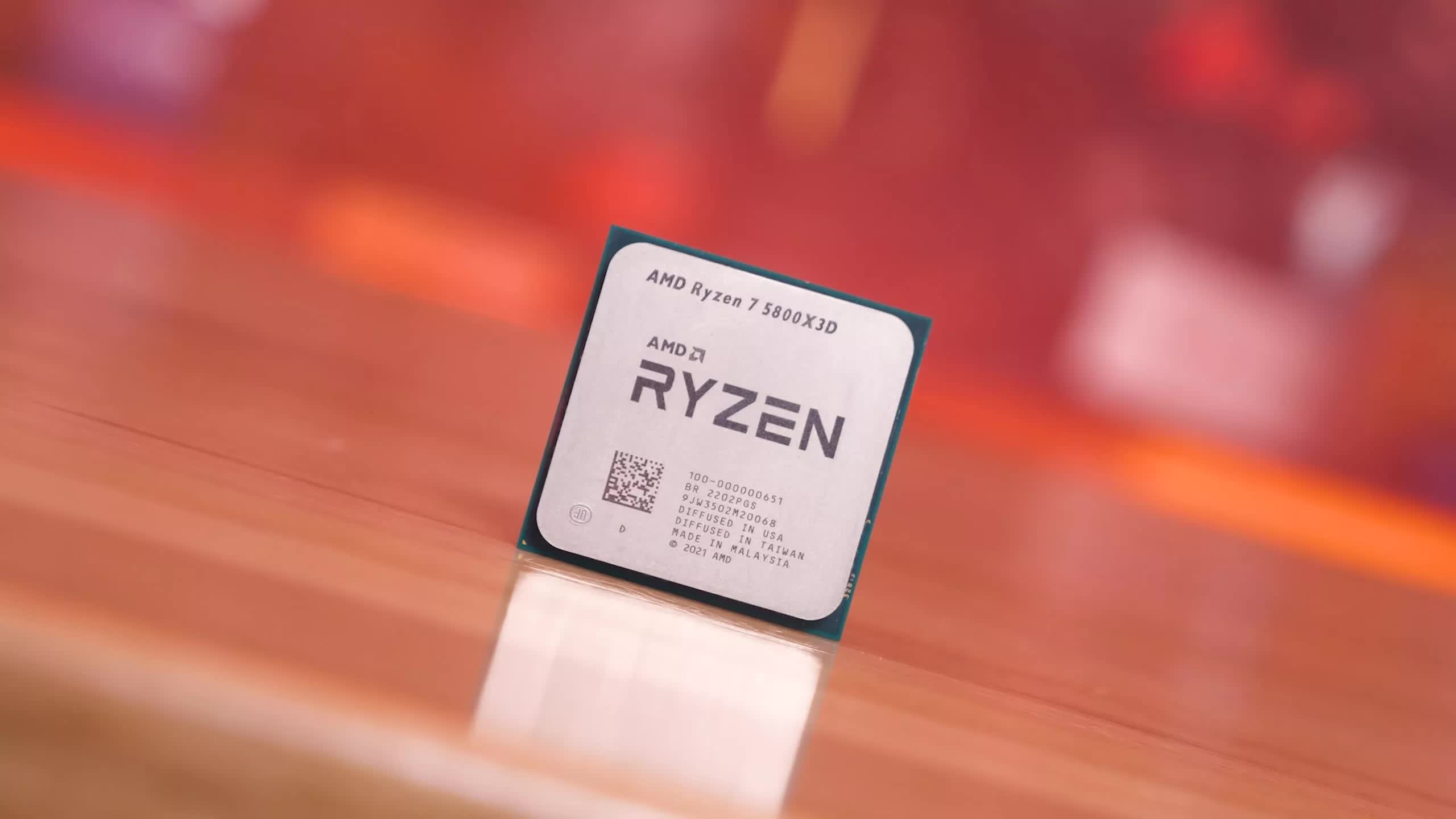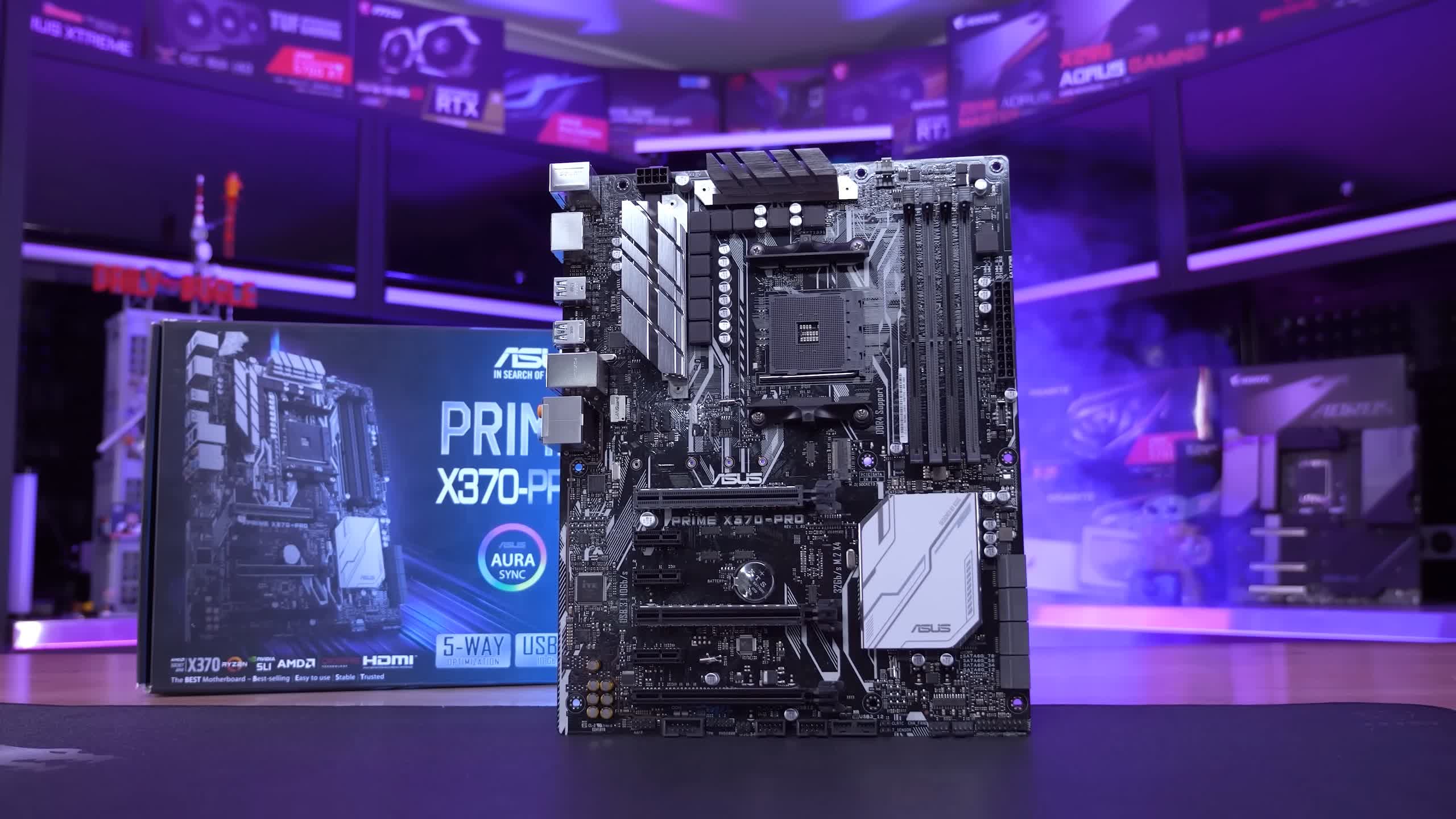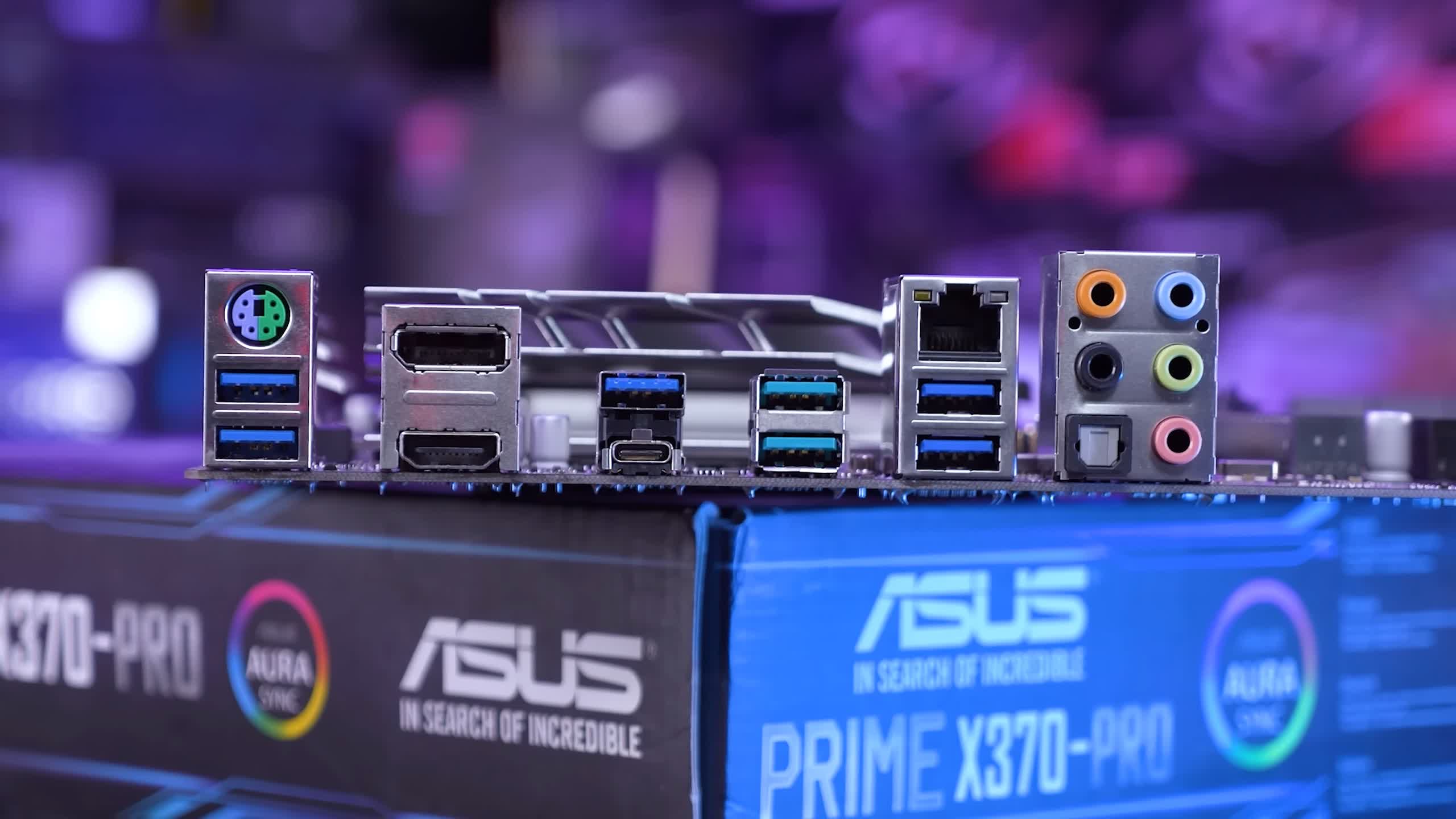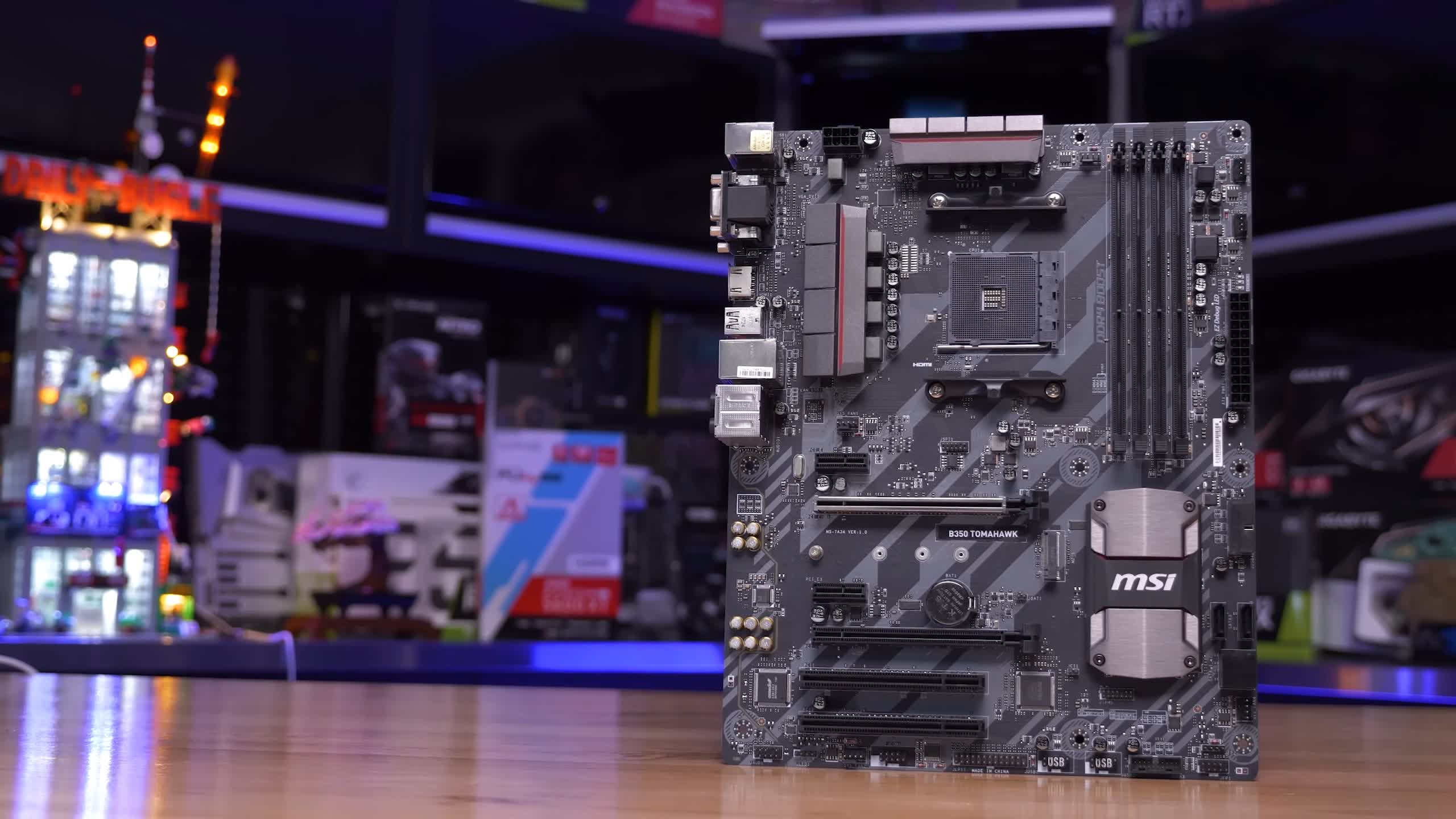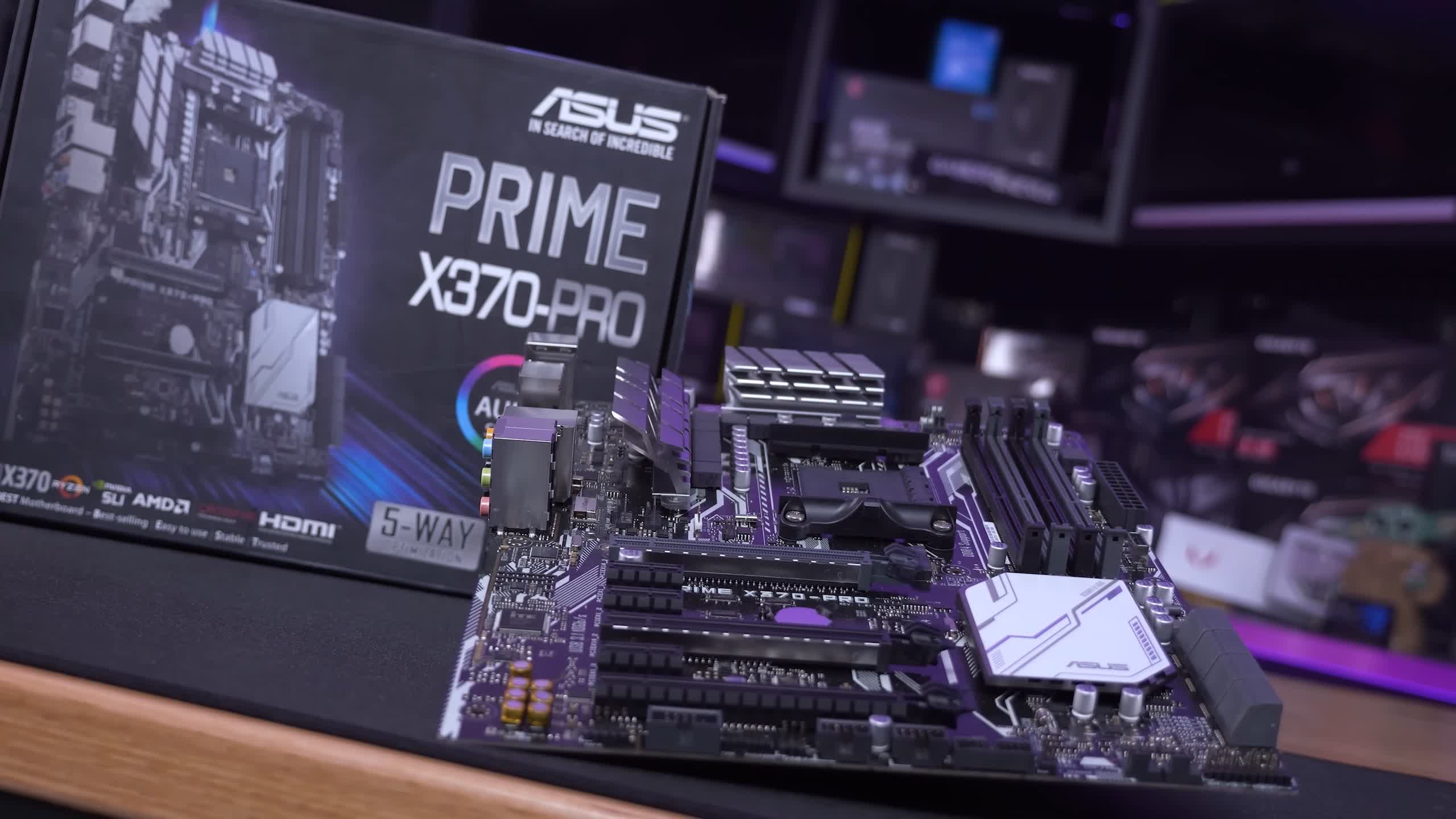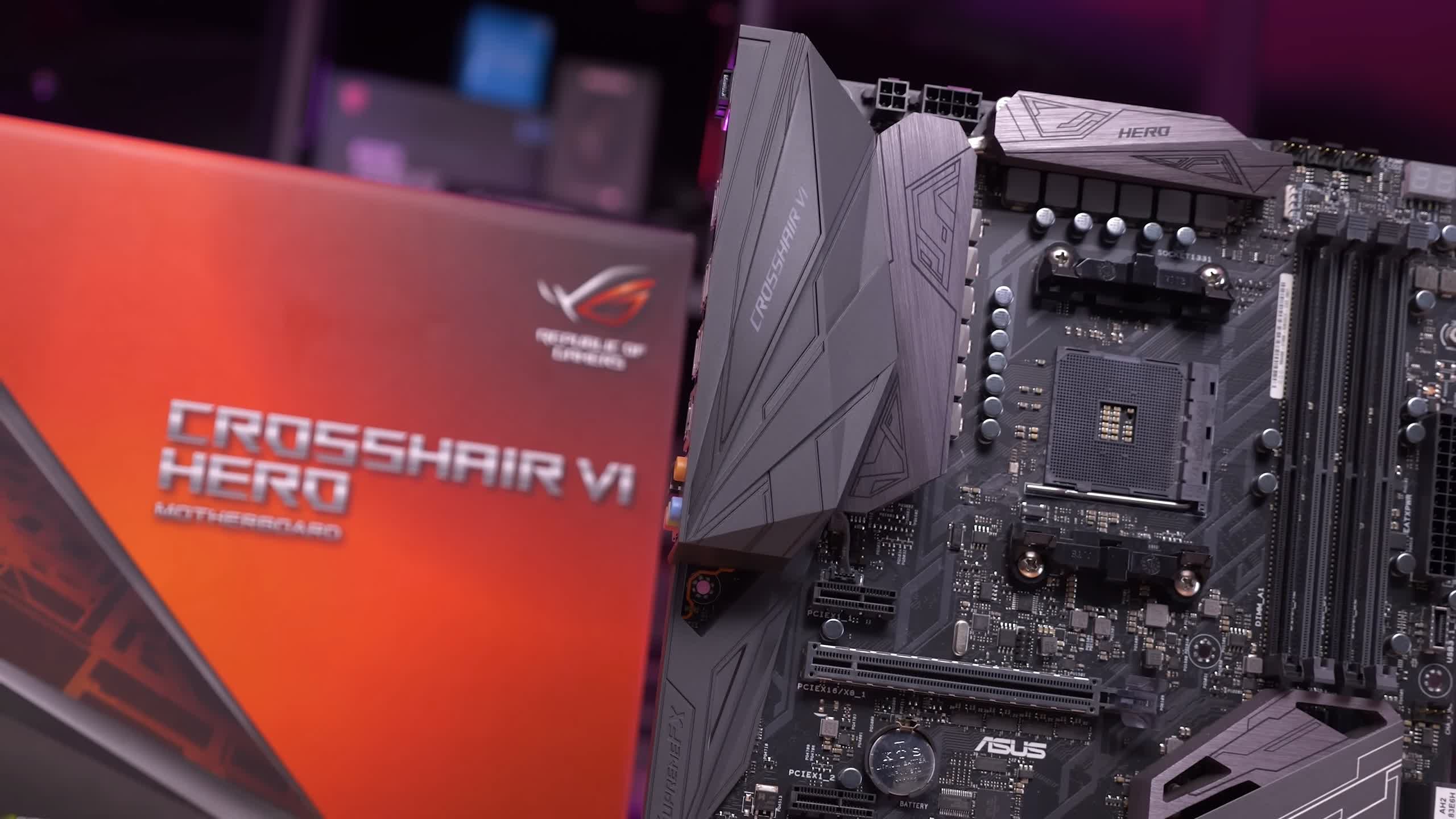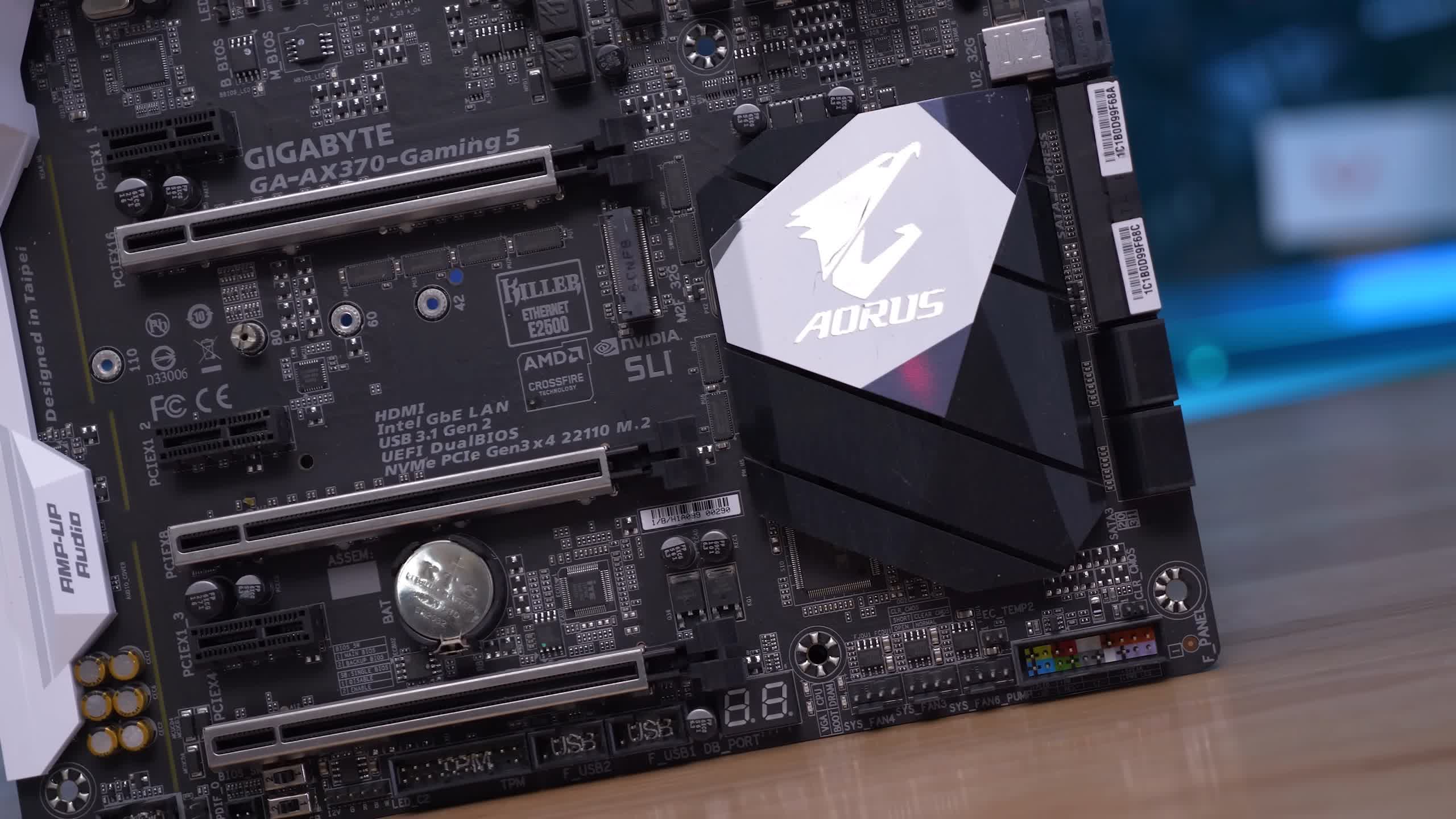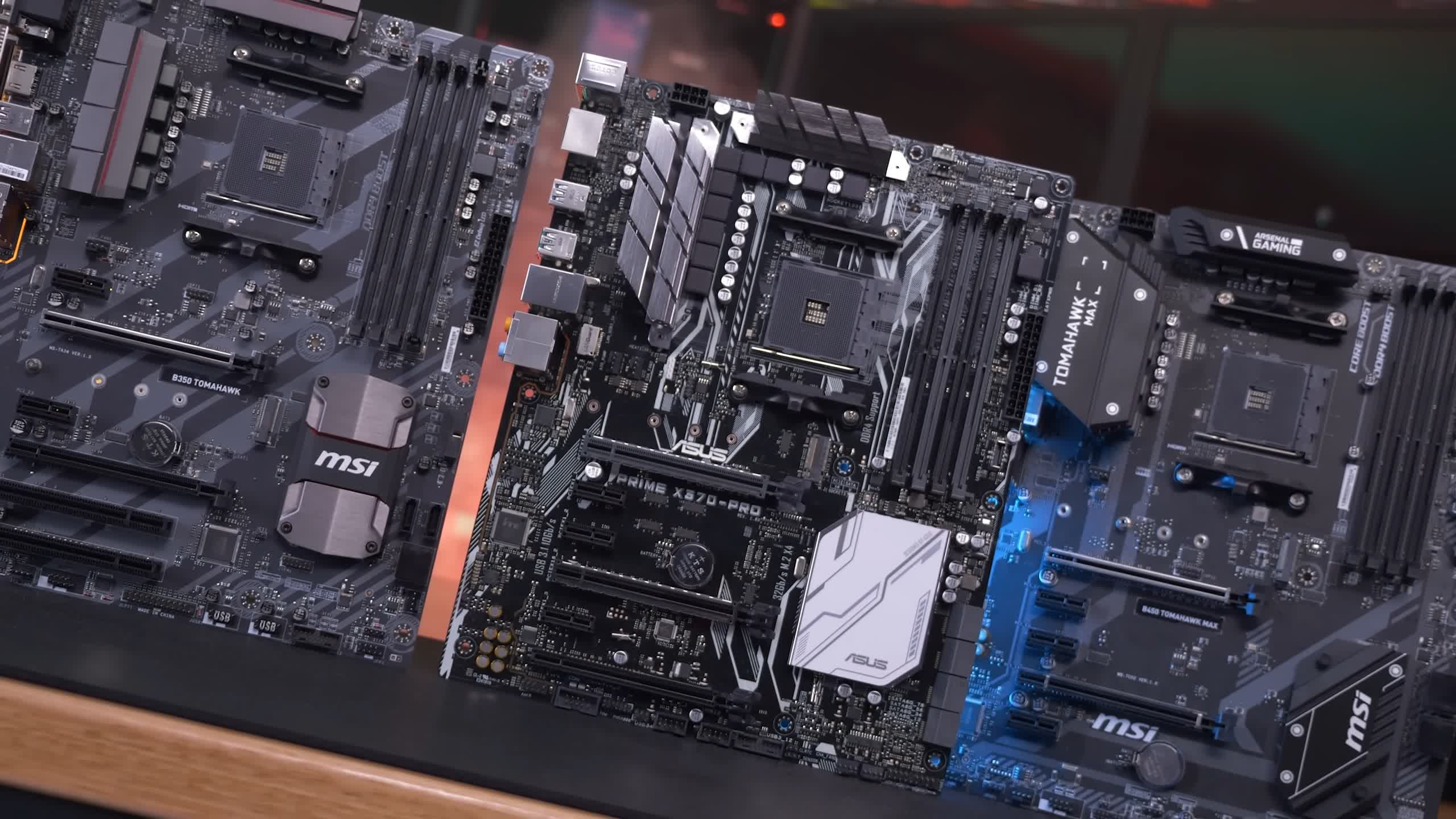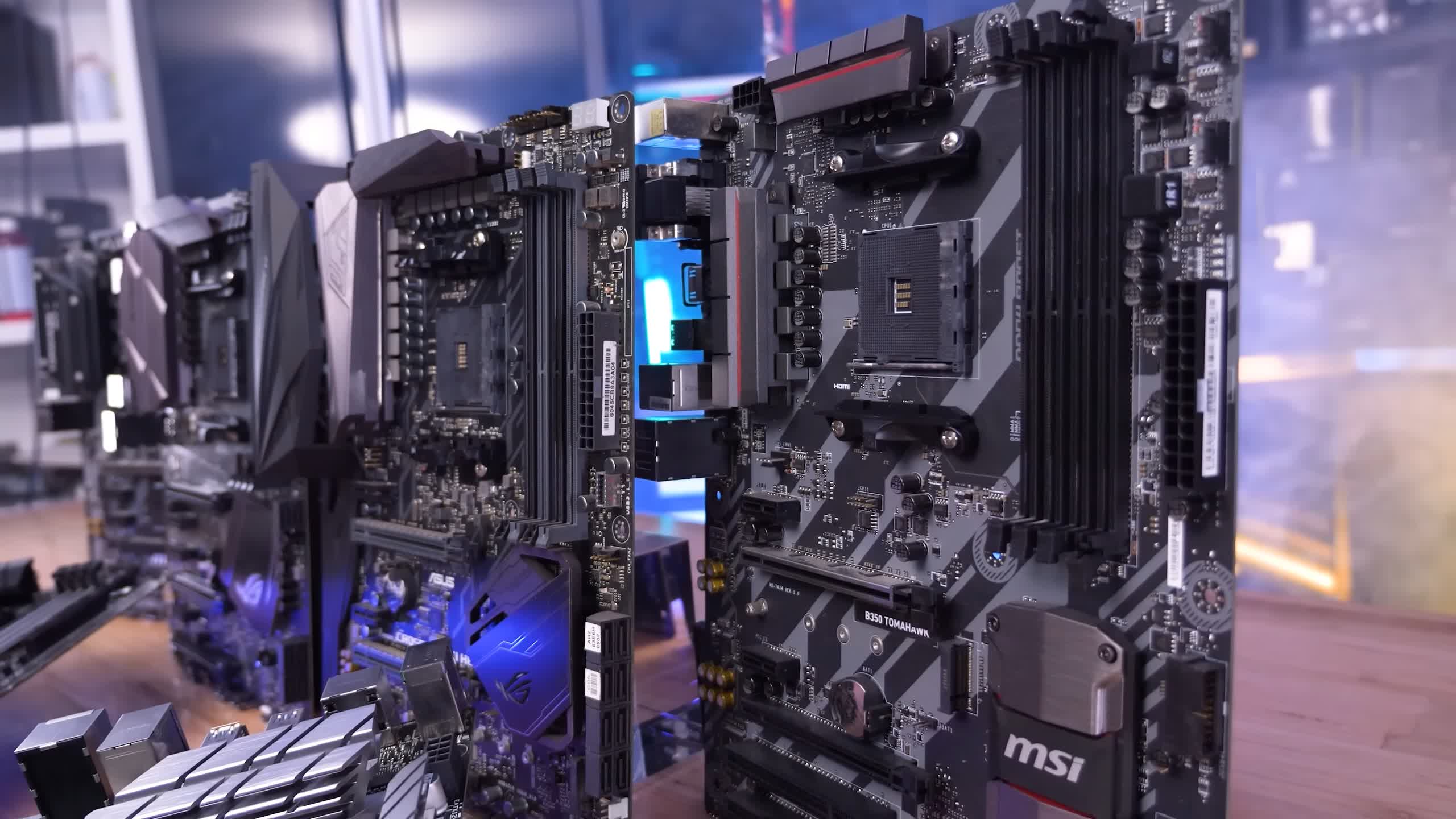Today we're taking the Ryzen 7 5800X3D and installing it on a few different B350 and X370 motherboards to see if it works, and if it does, how well does it work? It's a simple test, but it's also kind of a big deal as these boards are now five years old, so the ability to successfully pair them with one of the most powerful gaming CPUs out there is something quite special.
Earlier this year we got word that AMD were exploring the possibility of expanding support for Ryzen 5000 series processors to 300-series motherboards, which was exciting news for those of you still rocking a B350 or X370 motherboard, especially if it was a high-end board as having to spend more money on a 400 or 500-series board just to snag an affordable part like the Ryzen 5 5600 isn't all that appealing.
This was a smart move by AMD because if first-gen Ryzen owners were faced with having to buy a new motherboard in order to acquire a current generation CPU performance, they would certainly consider going with Intel's Alder Lake series which typically offers greater performance for roughly the same price, and you get a few new features as well such as PCIe 5.0.
Initial support for Ryzen 5000 processors on 300-series boards started popping up early on this year, but oddly only for the budget A320 boards, which most of you wouldn't have purchased as, let's be honest, they were all pretty garbage.
Since then support was sketchy, with some B350 and X370 boards supporting Ryzen 5000 CPUs, but then performance wasn't always where it should be. After probing AMD for information about a month ago, they told us to sit tight and wait for AGESA version 1.2.0.7 which was expected to be rolled out across all AM4 motherboards, and crucially it would add proper Ryzen 5000 series support to B350 and X370 boards, including the 5800X3D.
Ultimately it's up to motherboard manufacturers to roll out these updates for their various AM4 products, but it looks like all are on board and we have models from MSI, Asus, and Gigabyte to try out that have public access to AGESA 1.2.0.7. For updating each board, we installed a Ryzen 5 1600 as the original BIOS on the older B350 and X370 boards would recognize that CPU, then flashed to the latest BIOS, removed the R5 1600 and installed the 5800X3D.
This was easy on the MSI and Gigabyte boards, where I simply started with the latest BIOS supporting the 1.2.0.7 microcode, but for Asus several previous BIOS revisions needed to be installed first before the board would accept the latest microcode, so it was more of an incremental update process.
MSI B350 Tomahawk [B350]
One of the B350 boards I've hung onto for future testing was the MSI B350 Tomahawk as it was one of the better quality B350 boards. Although it only cost ~$100 back in 2017, it's still a very usable product and it would be a shame to retire it due to BIOS support. It handles 8-core/16-thread Ryzen 7 parts with ease and can even avoid throttling with the 16-core 3950X, especially if you provide the VRM heatsinks with a little airflow.
When compared to modern budget AMD B550 and Intel B660 boards, you're really not missing out on much. Sure it's PCIe 3.0 only, but that's still fine for gaming and most gamers will be happy with the USB 3.1 Gen 1 support, there's even a type-C and in total the I/O panel features 6 USB ports. There's a single M.2 slot, but again, for gamers this is likely fine, so we'll be very keen to see how this one handles the 5800X3D.
Asus ROG Strix B350-F Gaming [B350]
The Asus ROG Strix B350-F Gaming was one of the more expensive B350 boards, we believe it set you back around $120. This is a great looking board, the VRM probably isn't much more capable than that of the MSI B350 Tomahawk, and you still only got a single M.2 slot, but the board came with a solid audio solution and even more USB ports. It's still a very usable board in 2022 and would certainly be given a new lease on life with Ryzen 5000 series support, which it now has.
Asus Prime X370-Pro [X370]
As for the X370 boards, we have the Asus Prime X370-Pro which was around $160 back in 2017. Only a single M.2 slot, but you did get front panel USB 3.1 Type-C, 8 USB ports on the I/O panel (all of which are USB 3.0 or 3.1), decent audio and plenty of PCIe expansion, so you can include more M.2 storage on all of these boards using PCIe cards.
Asus ROG Crosshair VI Hero [X370]
Then we have the Asus ROG Crosshair VI Hero, and I can tell you, if I bought this thing back in 2017 I'd want to use it for as long as possible. This board used to cost $255, making it one of the most expensive first generation AM4 motherboards. Frankly, it's not a board I would have recommended, but if you did buy it, it's probably worked out pretty well given five years later you can pair it with a Ryzen 5000 series processor.
It's a serious board packing 10 USB 3.0 or better ports on the I/O panel with an additional 4 USB 2.0 ports, so 14 USB ports in total. It also includes BIOS Flashback, high quality audio and plenty of other bells and whistles.
Gigabyte GA-AX370 Gaming 5 [X370]
Finally, we've got the Gigabyte GA-AX370 Gaming 5 to try out with the latest AGESA microcode and this is another high-end X370 board which retailed for around $175. A more sensibly priced option when compared to the Crosshair, and that made it a popular choice for Ryzen users. It's also yet another well stocked X370 board with 10 USB ports on the I/O, dual Gigabit LAN, probably the best onboard audio of any AM4 board of the time, dual BIOS support, and more.
Test System
Those are all the B350 and X370 boards we have on hand for testing and for comparison we've also updated the MSI B450 Tomahawk Max, MSI MPG X570S Carbon Max WiFi, and the Asus ROG Crosshair VIII Extreme, all using the latest AGESA 1.2.0.7 microcode, which in the case of these more modern boards which already supported the 5000 series brought improved system stability.
For testing we're using the 5800X3D, though the results will be transferable for all Ryzen 5000 series processors, so if there's no performance difference between B350 and X570, for example, with the 5800X3D, the same will also be true for the Ryzen 5 5600.
For the memory we've installed four DDR4-3200 modules into each board, resulting in a dual-rank, dual-channel CL14 configuration and a Radeon RX 6900 XT was used with SAM enabled.
Benchmarks
Starting with Cinebench multi-core, we see that CPU performance is virtually identical across the B350, B450, X370 and X570 boards. From a 3-run average, the Gigabyte Gaming 5 produced the lowest score with the Asus Crosshair hitting the highest, and between them we saw a 5% performance discrepancy. The Gigabyte board aside, we're looking at no noticeable performance difference between the B350, X370 and X570 boards, which is great to see.
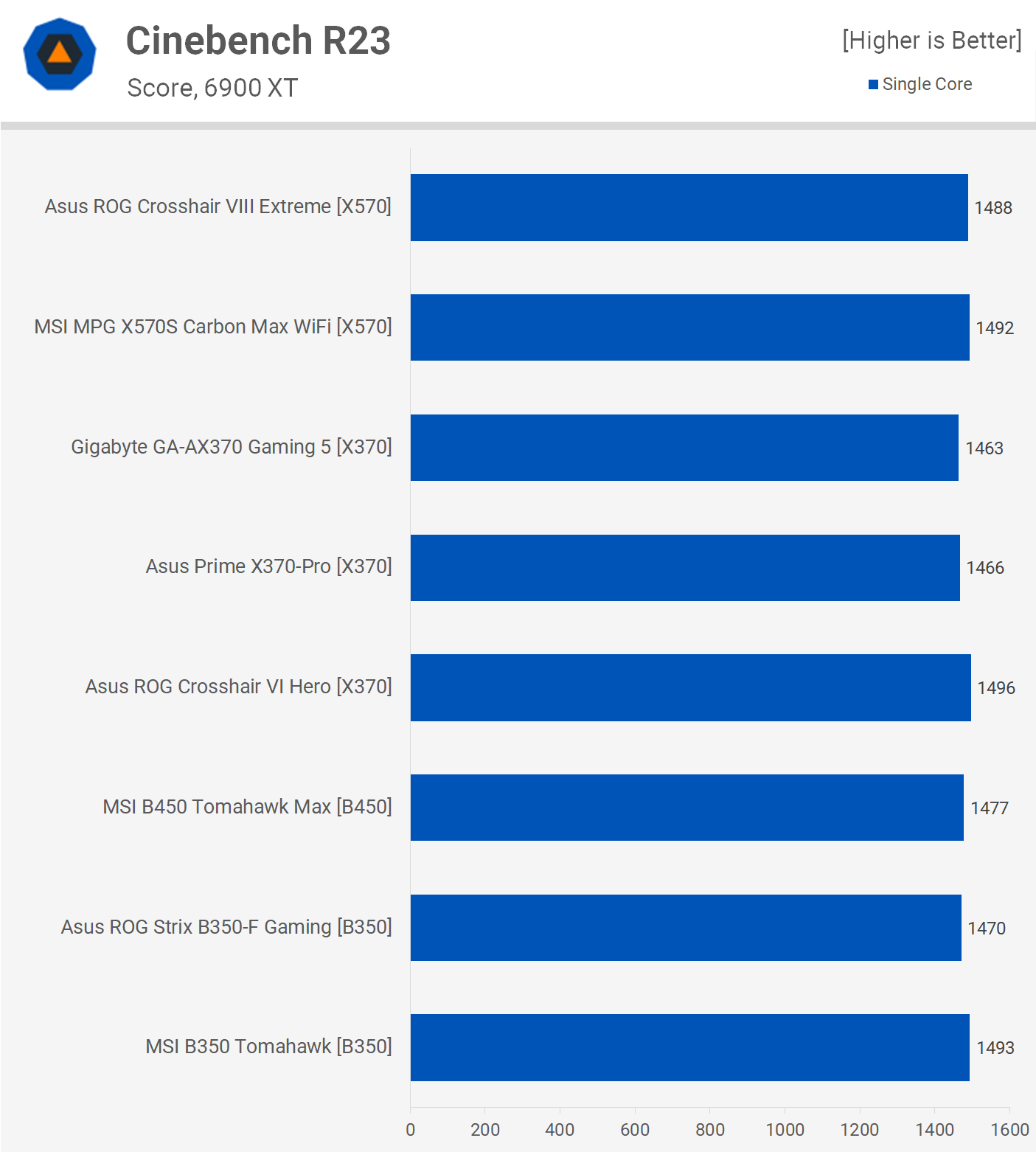
The same is also true of single-thread performance, and here the Gigabyte Gaming 5 did stack up better, despite producing the lowest score by a slim margin. We also see that the MSI B350 Tomahawk matched the much newer X570 boards without an issue.
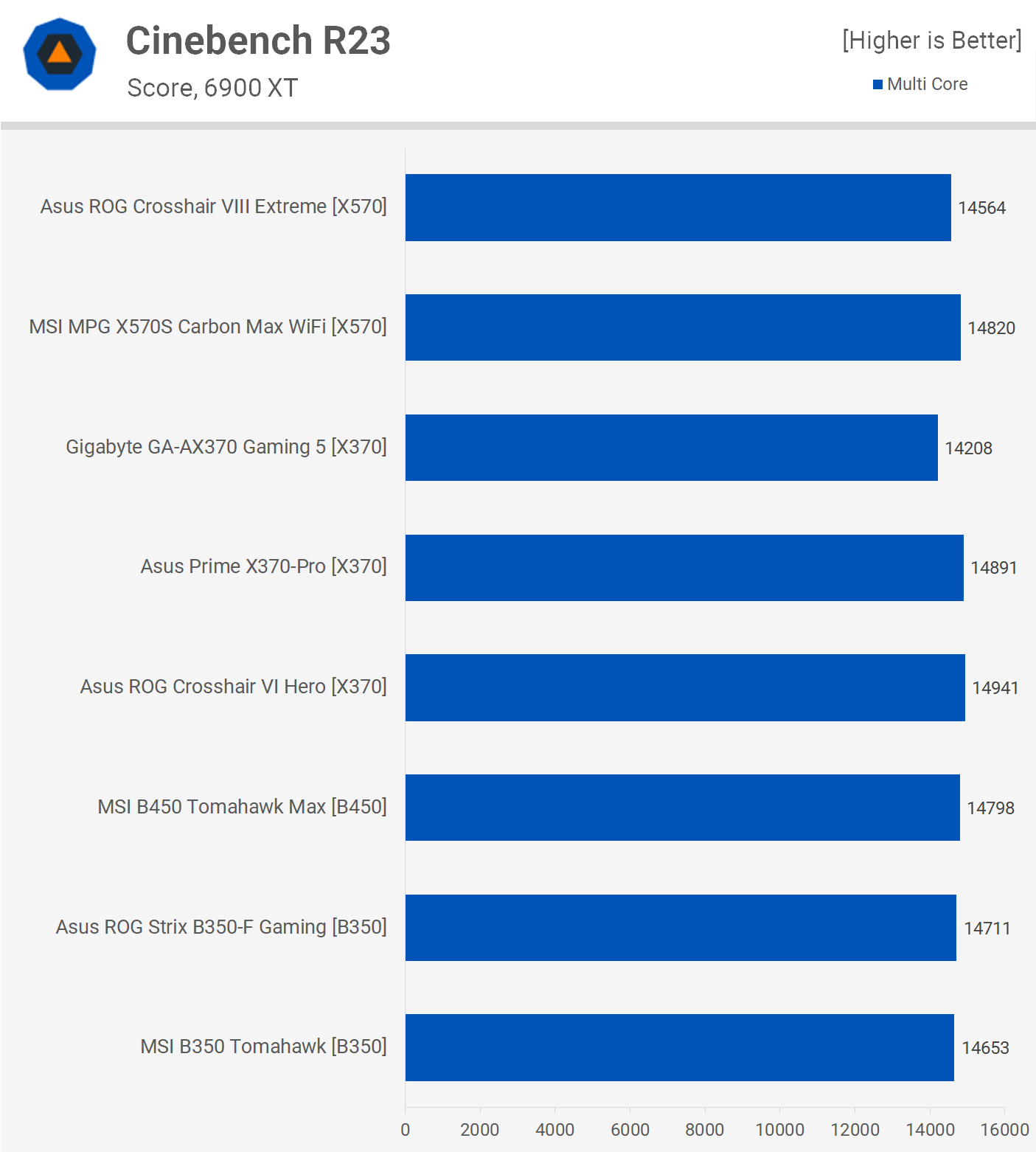

For a real world application test we ran the Adobe Photoshop 2022 benchmark and found all boards produced basically the same score. The X570 models were consistently "a few points ahead," but we're talking no more than a 1% margin, which is negligible.
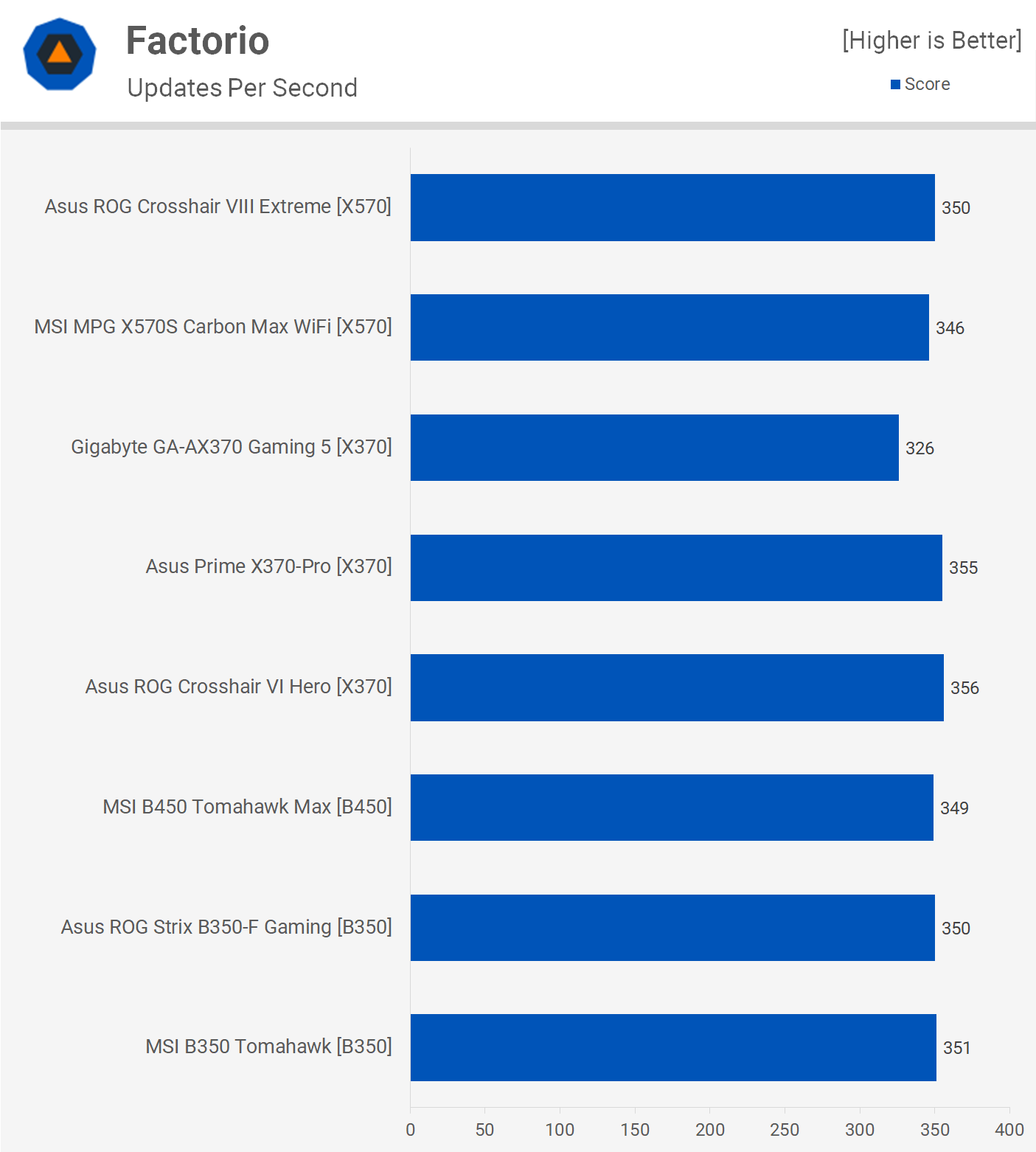
The 5800X3D is a beast in the Factorio benchmark and here we see that X370 and B350 boards are capable of the same extreme performance seen on the latest and greatest X570 models.
The Gigabyte Gaming 5 did lag behind a little, this time trailing the Asus X370 boards by around 8%, so I'd say Gigabyte has a little optimization work to do here. But the 5800X3D worked without issue, so in the grand scheme of things that's an amazing result on a 5 year old motherboard.
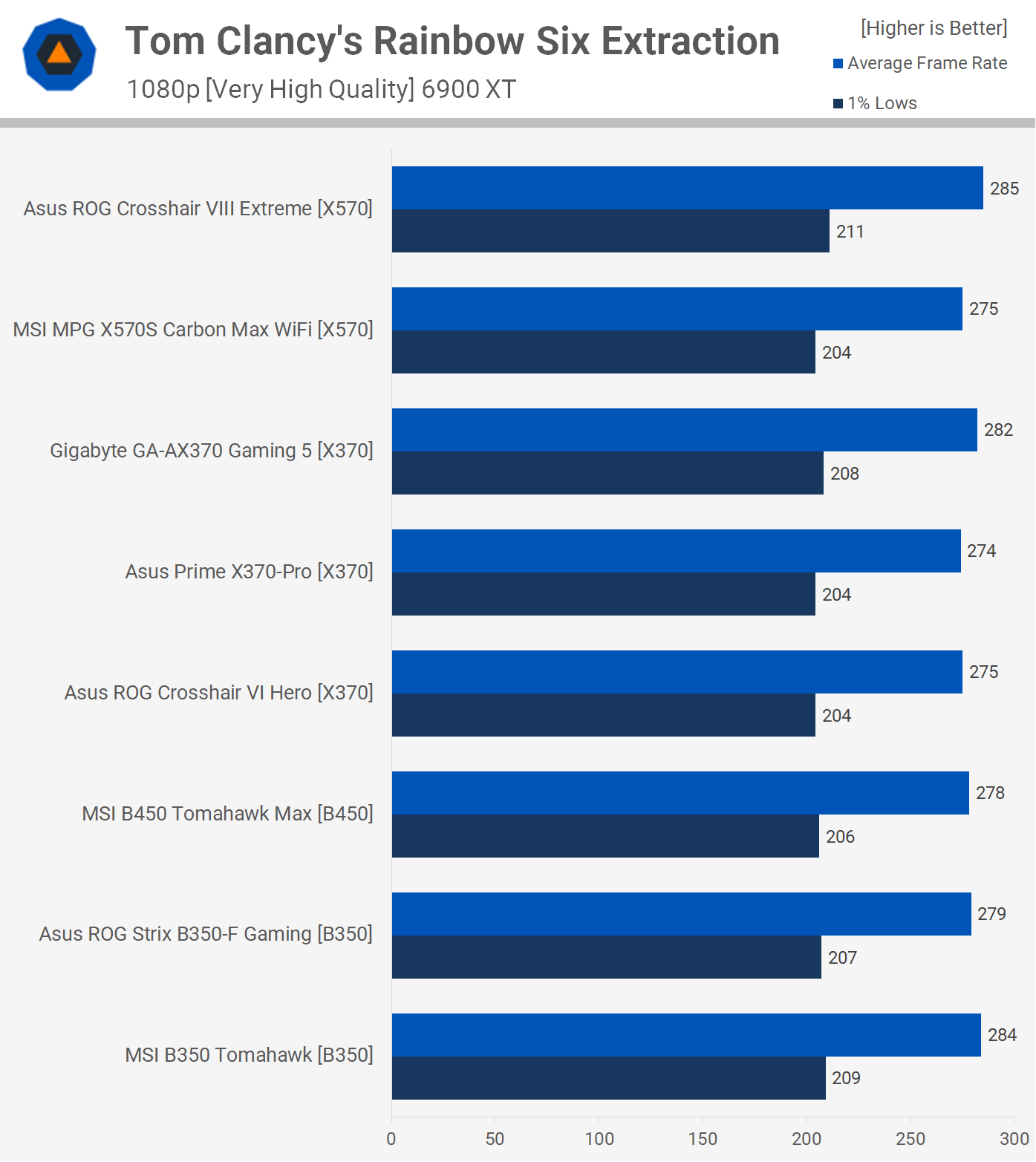
Now for some FPS benchmark marks, we'll start with Rainbow Six Extraction. It's worth noting that after a 3-run average we did see a 4% performance variation between the MSI and Asus X570 boards with Asus delivering the best result.
Most of the 300-series boards were in line with the MSI X570S Carbon Max WiFi though oddly the Gigabyte Gaming 5 was a little faster, basically matching the Asus ROG Crossfire VIII Extreme, so that contradicts what was found in the Factorio benchmark.

We also fired up Death Stranding and this game is heavily GPU limited, which is interesting as all boards tested delivering the exact same performance. The fact that 300-series boards are limited to PCIe 3.0 isn't an issue for this title, though worst-case we were expecting no more than a ~5% hit to performance.
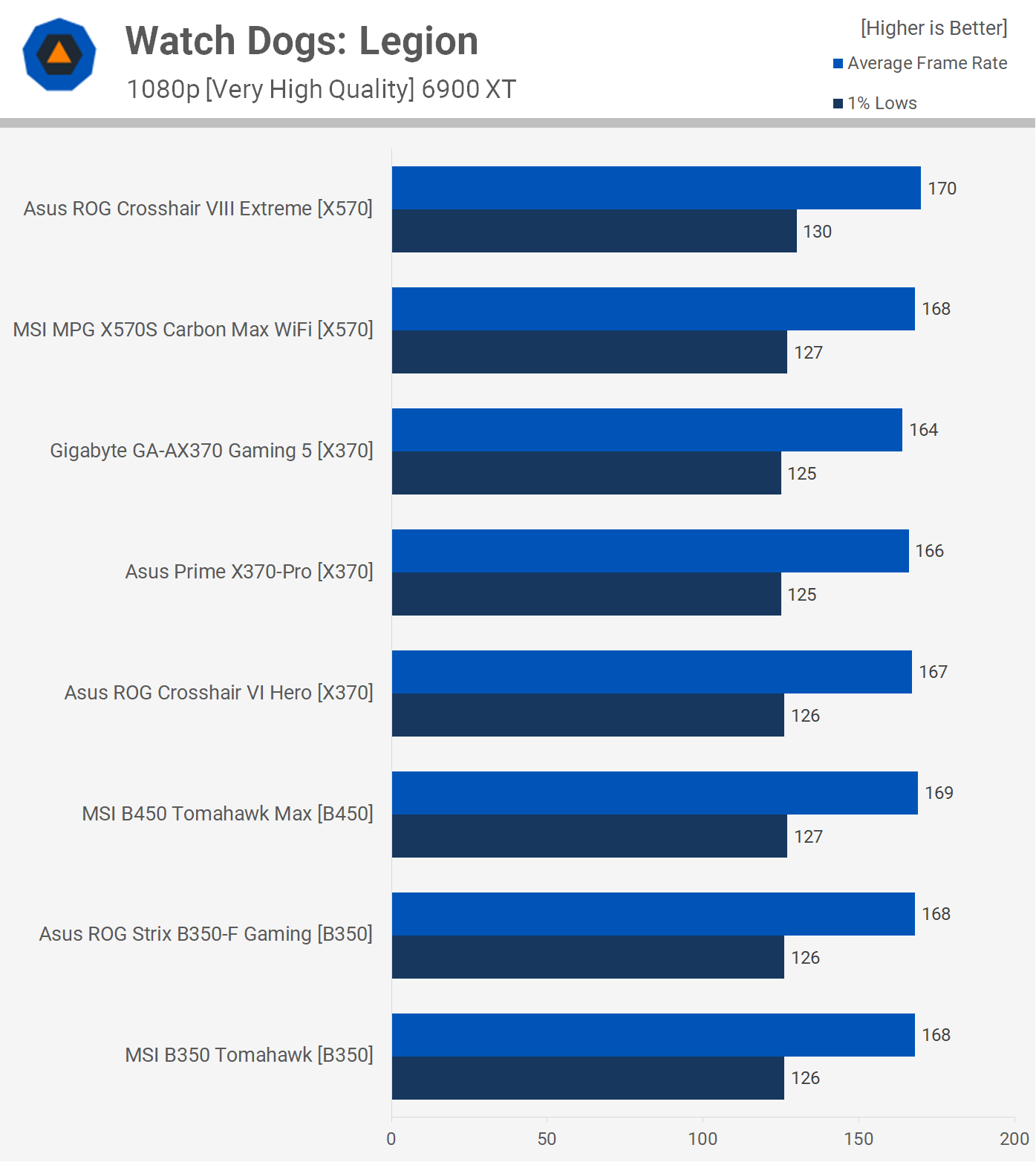
Watch Dogs: Legion performance was similar regardless of the board used, with at most a 4% performance margin seen between the various AM4 motherboards.
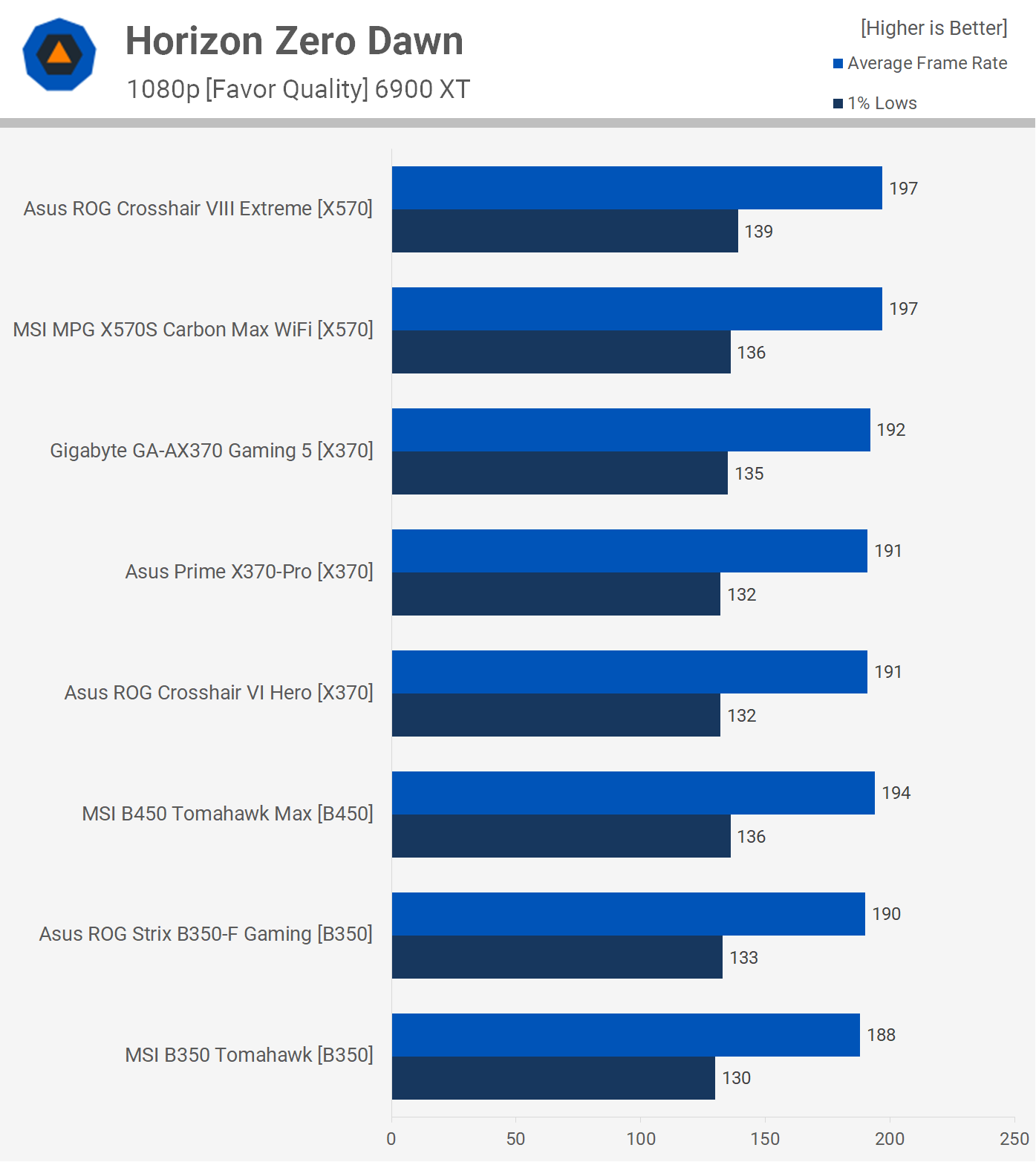
Finally, we have Horizon Zero Dawn, where previously we found this title to be slightly sensitive to PCIe bandwidth, which could explain why the 300 series boards are slightly slower, though the B450 Tomahawk is also a PCIe 3.0 board and it was slightly faster than the 300-series models. Either way, the difference is at most 5% between the slowest and fastest AM4 motherboards here.
Flawless Victory
There you have it. Pretty much all AMD 300-series motherboards should now support Ryzen 5000 series processors and while it was great to see budget B350 models getting the most out of the 5800X3D, the real value will be in pairing these older boards with cheaper and more widely available Ryzen 5 5600 and Ryzen 5 5700X parts.
Basically, if you still have a B350 or X370 board running a Zen or even Zen+ processor, swapping it out for a 5600 for just $175 is a seriously good deal as it will improve CPU-bound gaming by leaps and bounds. Our Ryzen GPU scaling feature showed on average a 60% performance improvement for CPU limited gaming, with peak gains beyond 100%.
Our Ryzen GPU scaling feature showed on average a 60% performance improvement for CPU limited gaming, with peak gains beyond 100%.
As a side note, Ryzen 5 1600 processors are regularly selling on eBay for $60 to $80, meaning you could upgrade to a Ryzen 5 5600 for around a $100 changeover fee, while Ryzen 7 1700 owners will do even better. It's a no brainer at this point, there's simply no better move for those still using a 300-series motherboard.
AMD should be commended for breathing new life into these old motherboards, and while we believe it's in their best interest to do so, it remains a big win for consumers. It's also great to see how well the AM4 platform has matured. All these B350 and X370 boards ran flawlessly with the new microcode, all accepted four DDR4-3200 models, and ran XMP without a hitch. Not only that, but AMD's new Smart Access Memory technology worked as well.
There does appear to be a bug with Radeon drivers as they were unable to detect the availability of SAM on 300-series boards, instead reporting that the feature was unavailable. However, it was possible to enable it at the BIOS level and the expected performance uplift was achieved nonetheless, so it is working despite what the Radeon Adrenaline drivers are reporting.
Bottom line, 300-series boards all look to have improved memory support with Ryzen 5000 CPUs, the ability to utilize SAM for a performance boost, and most importantly, mirror the performance of much newer X570 motherboards.
As a follow up to last week's opinion feature "Why Ryzen Was Amazing and the Haters Were All Wrong," this review goes to prove just how awesome the AM4 platform is. During Computex 2022, AMD announced their commitment to AM4 for at least the next few years, so you can expect the platform to improve beyond 2022. Now we just hope AMD manages to do the same with AM5, and even better, Intel smartens up and follows suit.
